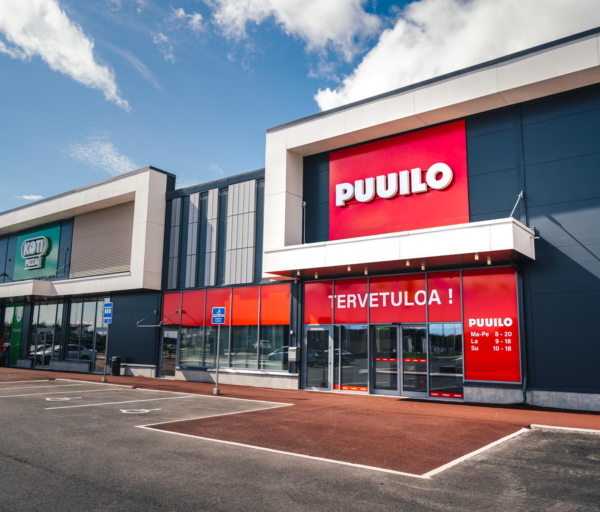11 Ways to Share SharePoint News with Non-Desk Workers Using Digital Signage
Communicating updates to non-desk workers can be challenging. Without regular access to computers or emails, they often miss crucial information. Digital signage bridges this gap effectively by bringing SharePoint news to them in real time. Here are practical methods to ensure non-desk teams stay connected and informed.
Understanding the Needs of Non-Desk Workers
Non-desk workers often lack access to traditional communication channels like desktops or email. Tools such as SharePoint’s news web part can overcome this, offering features like personalized feeds, notifications, and seamless integration with mobile apps. Rotating news sliders and interactive kiosks provide real-time updates that are easy to access in high-traffic areas.
To enhance security and accessibility, organizations can implement link settings that require passcodes or email verification for sensitive announcements. Managing access through SharePoint ensures content reaches the right audience while maintaining data privacy.
11 Ways to Share SharePoint News with Non-Desk Workers
1. Email Summaries and Notifications
Email remains a widely used tool for internal communication. Organizations can send concise email digests summarizing key SharePoint updates. Notifications alert workers to important announcements and can include direct links to articles, documents, or videos.
Pros: Easy to set up, reaches employees directly, and is suitable for time-sensitive updates.
Cons: May be overlooked or buried among other emails. Requires workers to actively check their inboxes – an use their phones to do that before and during their shifts, since most non-desk workers, by default, are not using a computer on the regular.
Real-Time Capability: Limited – depends on workers checking emails promptly. Delays can cause missed updates critical for time-sensitive industries like manufacturing or healthcare.
Best For: Organizations where workers periodically access email or prefer written summaries for later reference.
2. Interactive Kiosks
Interactive kiosks are self-service terminals placed in accessible areas. They can display SharePoint content, such as news posts, announcements, and rotating updates. Employees can use touchscreens to navigate through the content.
Pros: Highly visible, interactive, and accessible to workers in shared spaces.
Cons: Requires upfront hardware investment and periodic maintenance. Usability depends on intuitive design.
Real-Time Capability: High – content is updated automatically, ensuring workers receive the latest updates when they interact with the kiosk.
Best For: Environments with large teams and shared spaces where direct interaction enhances engagement.
How It Differs: Unlike bulletin boards or digital signage, kiosks allow users to explore content actively, rather than passively viewing rotating updates.
3. Digital Bulletin Boards
Digital bulletin boards replace traditional pinboards with electronic displays. They are static and can show scheduled updates from SharePoint, such as safety guidelines or team news.
Pros: Familiar format, cost-effective, and capable of showcasing various content types.
Cons: Limited interactivity and requires workers to be physically present to view updates.
Real-Time Capability: Low – updates need to be manually scheduled. This could delay critical messages, particularly in environments like hospitals or logistics centers.
Best For: Environments transitioning from paper-based communication but not yet ready for more complex solutions.
How It Differs: Unlike digital signage, bulletin boards typically lack automation or real-time updates, focusing instead on static content.
4. Mobile App Notifications
Mobile apps, such as Microsoft Teams, integrate with SharePoint to send notifications about updates. These apps ensure real-time delivery of news and announcements directly to workers’ smartphones.
Pros: Real-time delivery and can target specific groups or individuals.
Cons: Requires employees to download and actively use the app. Notifications may be ignored or missed.
Real-Time Capability: Medium – ensures immediate delivery of updates, but workers are unlikely to check their phones during shifts. This creates a delay in non-critical updates being seen, which is a significant consideration in industries with dynamic operations like retail or logistics.
Best For: Workers with regular smartphone access who benefit from immediate updates.
5. Group Huddles
Group huddles involve face-to-face meetings where team members discuss updates, share announcements, and align on priorities. This traditional method relies on verbal communication and physical presence.
Pros: Encourages team interaction and ensures clarity during discussions. Fosters collaboration and immediate feedback.
Cons: Time-bound and relies on workers being present at scheduled times. Content discussed may not always be documented for later reference.
Real-Time Capability: Medium – updates are typically shared during start and end-of-shift meetings, as non-desk workers cannot leave their tasks immediately unless it’s an emergency. This delay means updates may not be seen in real time, impacting fast-paced environments like manufacturing, retail, or hospitals.
Best For: Teams that regularly hold briefings and benefit from collaborative communication.
6. Printed Newsletters with QR Enhancements
Printed newsletters summarize SharePoint updates and include QR codes linking to online content. This method is particularly useful in areas with limited digital infrastructure.
Pros: Accessible for workers without digital tools. QR codes provide a bridge to detailed updates.
Cons: Lacks real-time updates and is environmentally less sustainable.
Real-Time Capability: Low – newsletters are static, and updates must wait until the next print cycle, which can lead to outdated information in fast-paced environments.
Best For: Workplaces transitioning to digital solutions but still reliant on physical communication.
7. Third-Party Communication Tools
Third-party tools like Slack or Microsoft Teams can integrate with SharePoint to share updates across multiple communication channels. Notifications can alert workers to important posts or announcements.
Pros: Integrates with existing workflows and versatile for different communication styles.
Cons: Requires workers to adopt new tools and manage notifications effectively.
Real-Time Capability: Medium – provides immediate updates when workers actively engage with the tools, but faces the same challenge as SharePoint: non-desk workers are unlikely to proactively log in, which can lead to missed updates in dynamic environments like retail or manufacturing.
Best For: Teams already using third-party platforms for communication.
How It Differs: Unlike digital signage, these tools focus on individual, device-based communication rather than shared physical displays.
8. Social Media Integration
Organizations can post SharePoint updates on private social media channels to reach non-desk workers. This method leverages familiar platforms to increase engagement.
Pros: Engages workers through visually appealing content. Allows broad access to updates.
Cons: Not all workers may use social media. Sensitive updates may raise security concerns.
Real-Time Capability: Medium – posts are shared instantly, but engagement depends on workers’ usage patterns.
Best For: Informal communication targeting tech-savvy workers.
9. Wearable Technology
Wearable devices, such as smartwatches, can deliver SharePoint updates and notifications directly to employees. This option ensures hands-free communication for workers on the go.
Pros: Delivers updates unobtrusively. Ideal for workers who cannot use smartphones or computers.
Cons: High cost and requires workers to adopt new technology.
Real-Time Capability: High – ensures instant delivery of updates, critical for fast-paced industries like logistics.
Best For: Tech-forward industries with a mobile workforce.
10. Voice Assistants and Kiosks
Voice-activated assistants or kiosks connected to SharePoint provide hands-free access to updates. Workers can use voice commands to retrieve specific announcements or data.
Pros: Useful in noisy or busy environments. Hands-free interaction.
Cons: Limited functionality in certain environments. Significant setup effort may be needed.
Real-Time Capability: Medium – updates are accessible when requested but require user interaction.
Best For: Workplaces that prioritize accessibility in fast-paced settings.
11. Digital Signage
Digital signage uses screens placed in high-traffic areas to display SharePoint updates, including news posts, metrics, and videos. Content is automated and updated in real time.
Pros:
- Pulls data from integrations in real time, ensuring workers see the latest updates
- Can be customized to show content based on multiple variables: location, team, importance level, time of the day, etc.
- Visually engaging, suitable for high-traffic areas.
- Supports multimedia content like videos and graphs.
- Can enhance face-to-face meetings by displaying relevant data during discussions.
- Great recall rates. Your content will be not just seen more but also remembered better when displayed on the info screen: digital signage has a recall rate of a whopping 83%.
Cons: Initial investment in hardware and setup required. Ongoing maintenance may be necessary.
Real-Time Capability: High – automated updates ensure that information is always current. Strategically placed digital signage displays guarantee workers cannot miss crucial updates, as they deliver the right information in the right location, such as break rooms, production areas, or retail spaces, making it ideal for environments like manufacturing floors or retail stores.
Best For: Large teams or distributed workers who benefit from visual, dynamic updates.
How It Differs: Unlike bulletin boards or kiosks, digital signage offers continuous updates, automation, and multimedia capabilities, ensuring engaging and efficient communication.
As Thomas Grüner, Manager WMS Tactical Board at Rexel put it: “When employees walk across the warehouse, they simply can’t avoid seeing Power BI reports. This has had a huge effect on our productivity and the quality of our work.”
Choosing the Right Digital Signage Tools
Select tools that integrate seamlessly with SharePoint. Prioritize features like:
- Rotating news sliders for engaging updates.
- Video and multimedia support.
- Options to customize access through link settings.
- Easy-to-use dashboards for managing content.
- Interactivity
Aligning Messages with Company Goals
Ensure communication strategies align with organizational objectives. Use SharePoint’s news web part to highlight achievements, emphasize safety, or share updates relevant to company milestones. Tailored messaging fosters better engagement and helps workers feel connected to the broader mission.
Measuring Communication Effectiveness
Most organizations measure the impact of their communication strategy with metrics such as:
- Views and engagement rates
- Click-through rates from mobile app notifications.
- Feedback collected through surveys or on-platform comments
To move beyond proxy metrics and focus on the impact of communication effectiveness, we suggest monitoring the following:
- Operational Improvements: Measure the reduction in errors or delays caused by communication gaps. For instance, track the time saved in production lines or patient safety compliance rates after implementing digital signage.
- Employee Behavior Changes: Monitor how quickly workers adapt to new procedures or safety protocols introduced via SharePoint updates. This reflects whether the communication effectively drives desired actions.
- Engagement with Critical Updates: Track adherence to mandatory updates, such as meeting attendance or safety drills, to assess the reliability of your communication channels in critical scenarios.
- Reduction in Safety Incidents: Assess whether improved communication correlates with fewer accidents or violations of safety protocols.
- Incident Response Times: Monitor how quickly workers respond to safety-related announcements or alarms delivered through communication channels like digital signage or mobile apps.
- Employee Satisfaction and Retention: Use employee feedback surveys to understand whether workers feel informed and valued. Retention rates may also provide indirect feedback on communication effectiveness.
Use these insights to refine your approach and continuously improve how SharePoint news reaches non-desk workers and determe the best channel for your company.

